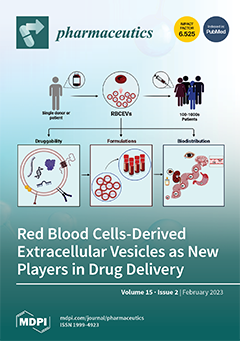Mucopolysaccharidoses (MPS) are rare genetic disorders belonging to the lysosomal storage diseases. They are caused by mutations in genes encoding lysosomal enzymes responsible for degrading glycosaminoglycans (GAGs). As a result, GAGs accumulate in lysosomes, leading to impairment of cells, organs and, consequently, the
[...] Read more.
Mucopolysaccharidoses (MPS) are rare genetic disorders belonging to the lysosomal storage diseases. They are caused by mutations in genes encoding lysosomal enzymes responsible for degrading glycosaminoglycans (GAGs). As a result, GAGs accumulate in lysosomes, leading to impairment of cells, organs and, consequently, the entire body. Many of the therapies proposed thus far require the participation of chaperone proteins, regardless of whether they are therapies in common use (enzyme replacement therapy) or remain in the experimental phase (gene therapy, STOP-codon-readthrough therapy). Chaperones, which include heat shock proteins, are responsible for the correct folding of other proteins to the most energetically favorable conformation. Without their appropriate levels and activities, the correct folding of the lysosomal enzyme, whether supplied from outside or synthesized in the cell, would be impossible. However, the baseline level of nonspecific chaperone proteins in MPS has never been studied. Therefore, the purpose of this work was to determine the basal levels of nonspecific chaperone proteins of the Hsp family in MPS cells and to study the effect of normalizing GAG concentrations on these levels. Results of experiments with fibroblasts taken from patients with MPS types I, II, IIIA, IIIB, IIIC, IID, IVA, IVB, VI, VII, and IX, as well as from the brains of MPS I mice (
Idua−/−), indicated significantly reduced levels of the two chaperones, Hsp70 and Hsp40. Interestingly, the reduction in GAG levels in the aforementioned cells did not lead to normalization of the levels of these chaperones but caused only a slight increase in the levels of Hsp40. An additional transcriptomic analysis of MPS cells indicated that the expression of other genes involved in protein folding processes and the cell response to endoplasmic reticulum stress, resulting from the appearance of abnormally folded proteins, was also modulated. To summarize, reduced levels of chaperones may be an additional cause of the low activity or inactivity of lysosomal enzymes in MPS. Moreover, this may point to causes of treatment failure where the correct structure of the enzyme supplied or synthesized in the cell is crucial to lower GAG levels.
Full article






